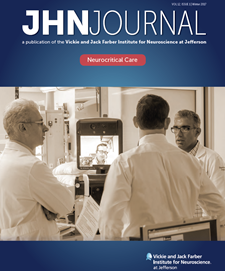Article Title
Paroxysmal Sympathetic Hyperactivity
Abstract
It is not uncommon for physicians who treat patients with traumatic brain injuries to see wide fluctuations in the heart rate, respiratory rate and blood pressure. For decades, these fluctuations were thought to be seizures, caused by pressure on the thalamus. They were originally termed Diencephalic Autonomic Seizures by Dr. Wilder Penfield in 1929. He described episodes of lacrimation, hypertension, diaphoresis and agitation. Dr. Penfield’s “seizures” were later shown to have no electrographic correlate. Since that time, many names have been used to describe similar episodes: Dysautonomia, Sympathetic Storming, Brainstem Attacks, Autonomic Dysregulation, Paroxsymal Autonomic Instability with Dystonia and Paroxysmal Sympathetic Hyperactivity to name only a few.
Paroxysmal Sympathetic Hyperactivity (PSH) occurs in acquired brain injury and features simultaneous, paroxysmal transient increases in sympathetic and motor activity.1 It is most commonly associated with traumatic brain injury. However, it has been documented in many neurologic conditions (Table 1) and an episode can be precipitated by a variety of triggers.2 (Table 2).
Recommended Citation
Urtecho, MD, Jacqueline
(2017)
"Paroxysmal Sympathetic Hyperactivity,"
JHN Journal: Vol. 12:
Iss.
1, Article 8.
DOI: https://doi.org/10.29046/JHNJ.012.1.008
Available at:
https://jdc.jefferson.edu/jhnj/vol12/iss1/8

